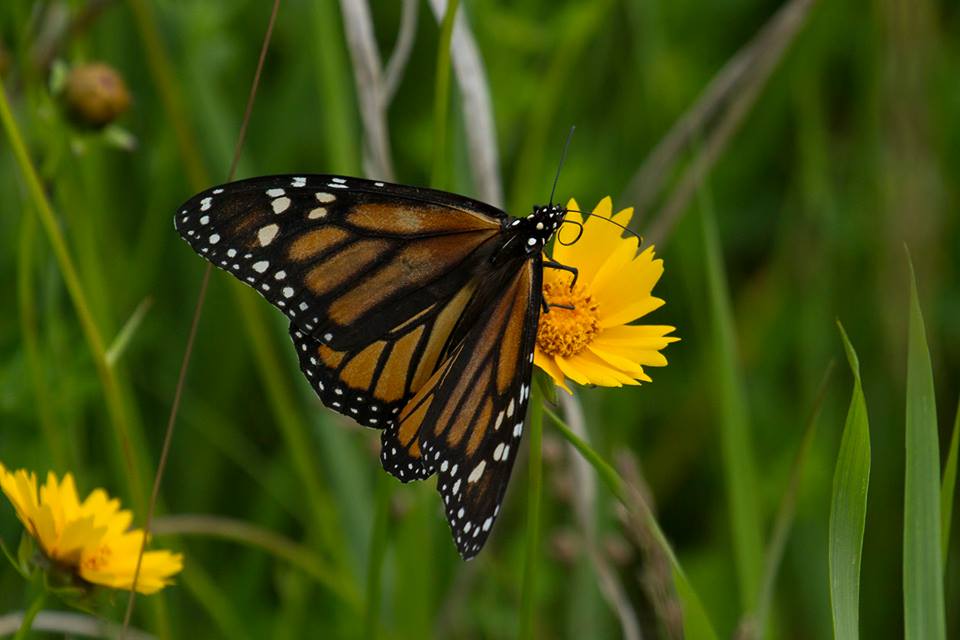During the course of summer one notices the waves of different insects that are present at different times. One might assume that they are present throughout the season, but really their populations ebb and flow during distinct periods, at least for many of them.

Monarch butterfly
Like dragonflies, butterflies in all their colors bring another layer of interest to the land. In early summer a few are around: mourning cloaks, red admirals, American ladies, and eventually some monarchs. Both of the latter are migratory and recolonize in our area from the south. The earliest butterflies mate and are then unseen for a while, unless you are lucky enough to find and recognize their caterpillars.
In mid- summer there are blues, skippers, crescents, swallowtails, sulphurs, wood nymphs, and sometimes unexpected visitors from the south. The monarchs which arrived in late May immediately began laying eggs on the milkweed they found, and now the next generation of butterflies is appearing and continuing to do the same.
Woodland Dunes has hundreds of acres of what is considered old field- farmland that is no longer cultivated. Before glyphosate was used in agriculture, common milkweed was considered the most common weed in fields. When the farm fields of our preserves were no longer cultivated, milkweed that was already present expanded it’s coverage. We have many acres, more than 100 acres today, where milkweed is proving to be a refuge for monarch butterflies.
Currently, they are seen feeding and mating over almost all the open land in the preserve (during mating the males and females are attached, and the males fly with the females hanging below with wings folded). There are a number of vantage points where dozens of monarchs can be seen at a time – one is at the overlook for the wetland restoration we did in cooperation with Wisconsin Public Service Corporation a few years ago. There are a lot of milkweed plants close to the platform and parking area.
There are more monarchs to come. Our area is especially important to them and their reproduction. In the next six weeks they will allow us to see one of nature’s miracles. They will continue to reproduce, but the last generation of the year (born in latter August) will begin to migrate to Mexico to a place they’ve never been. Around Labor Day, when we are enjoying the Kite Festival, monarchs will be streaming southward, following the shoreline of Lake Michigan. Actually, they start a bit earlier- you’ll notice when all the monarchs seem to be flying to the southwest and this spectacle will continue into October. I’m sure that just a small fraction of the monarchs make it to their winter refuge, and even those that do face an uncertain future depending on weather and people disturbing their habitat (which is only a few acres in size). Those that survive will begin their northward flight in late winter and some will reach Texas to start next years generations. If all goes well, we’ll again see monarchs here next summer.
When you see a monarch, I hope you appreciate all of this, and the value of weeds like milkweed and land left to heal after many years of working for us. Monarchs, and milkweed, have declined significantly in numbers over the last few decades- not through any bad intentions, but more through lack of understanding of how interrelated the parts of nature are, and how powerful our actions can be.
I hope as the summer continues, you find a bit of joy and wonder in every monarch you see.
photo- monarch butterfly at Woodland Dunes by Nancy Nabak
—
Jim Knickelbine
Executive Director
Woodland Dunes Nature Center and Preserve
